Kevin Chetty
CubeDN: Real-time Drone Detection in 3D Space from Dual mmWave Radar Cubes
Aug 25, 2025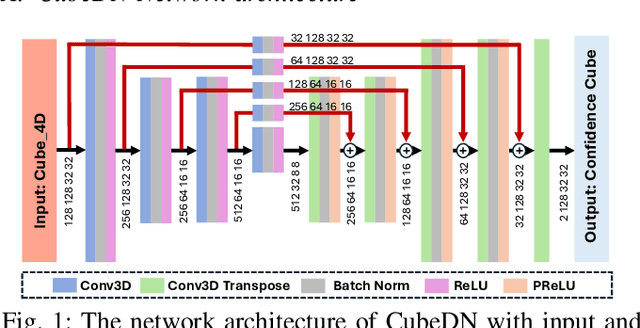

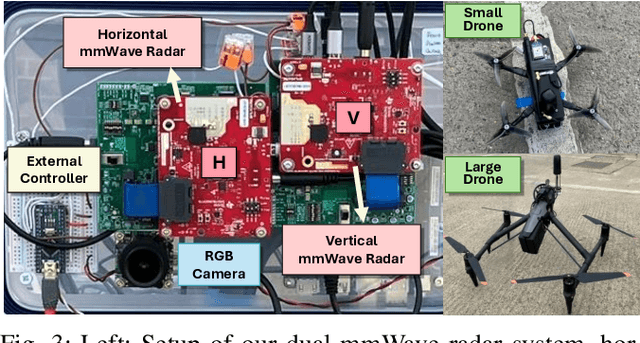
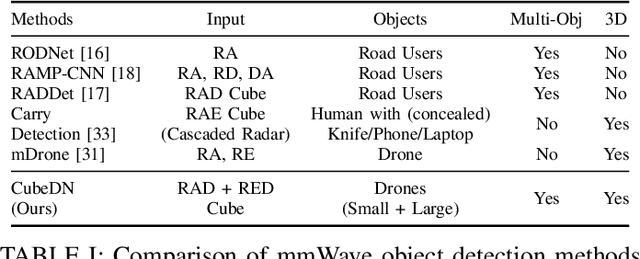
Abstract:As drone use has become more widespread, there is a critical need to ensure safety and security. A key element of this is robust and accurate drone detection and localization. While cameras and other optical sensors like LiDAR are commonly used for object detection, their performance degrades under adverse lighting and environmental conditions. Therefore, this has generated interest in finding more reliable alternatives, such as millimeter-wave (mmWave) radar. Recent research on mmWave radar object detection has predominantly focused on 2D detection of road users. Although these systems demonstrate excellent performance for 2D problems, they lack the sensing capability to measure elevation, which is essential for 3D drone detection. To address this gap, we propose CubeDN, a single-stage end-to-end radar object detection network specifically designed for flying drones. CubeDN overcomes challenges such as poor elevation resolution by utilizing a dual radar configuration and a novel deep learning pipeline. It simultaneously detects, localizes, and classifies drones of two sizes, achieving decimeter-level tracking accuracy at closer ranges with overall $95\%$ average precision (AP) and $85\%$ average recall (AR). Furthermore, CubeDN completes data processing and inference at 10Hz, making it highly suitable for practical applications.
Boundary-enhanced time series data imputation with long-term dependency diffusion models
Jan 11, 2025



Abstract:Data imputation is crucial for addressing challenges posed by missing values in multivariate time series data across various fields, such as healthcare, traffic, and economics, and has garnered significant attention. Among various methods, diffusion model-based approaches show notable performance improvements. However, existing methods often cause disharmonious boundaries between missing and known regions and overlook long-range dependencies in missing data estimation, leading to suboptimal results. To address these issues, we propose a Diffusion-based time Series Data Imputation (DSDI) framework. We develop a weight-reducing injection strategy that incorporates the predicted values of missing points with reducing weights into the reverse diffusion process to mitigate boundary inconsistencies. Further, we introduce a multi-scale S4-based U-Net, which combines hierarchical information from different levels via multi-resolution integration to capture long-term dependencies. Experimental results demonstrate that our model outperforms existing imputation methods.
A large-scale multimodal dataset of human speech recognition
Mar 15, 2023Abstract:Nowadays, non-privacy small-scale motion detection has attracted an increasing amount of research in remote sensing in speech recognition. These new modalities are employed to enhance and restore speech information from speakers of multiple types of data. In this paper, we propose a dataset contains 7.5 GHz Channel Impulse Response (CIR) data from ultra-wideband (UWB) radars, 77-GHz frequency modulated continuous wave (FMCW) data from millimetre wave (mmWave) radar, and laser data. Meanwhile, a depth camera is adopted to record the landmarks of the subject's lip and voice. Approximately 400 minutes of annotated speech profiles are provided, which are collected from 20 participants speaking 5 vowels, 15 words and 16 sentences. The dataset has been validated and has potential for the research of lip reading and multimodal speech recognition.
Wi-Fi Based Passive Human Motion Sensing for In-Home Healthcare Applications
Apr 13, 2022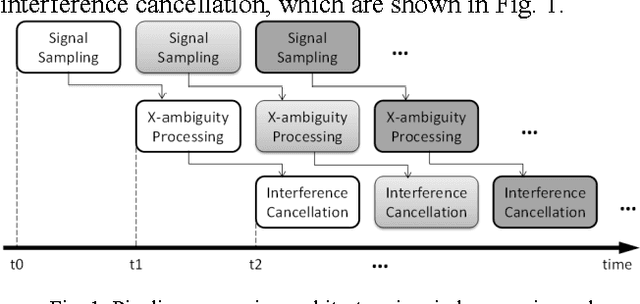
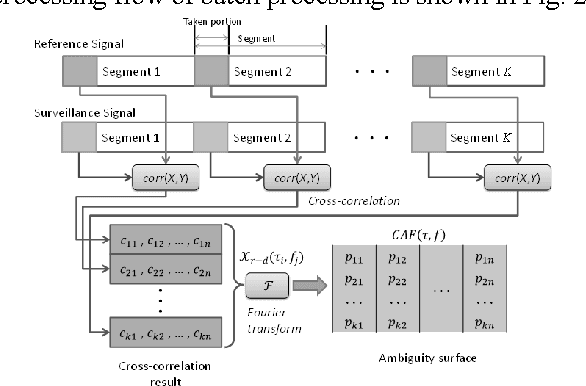
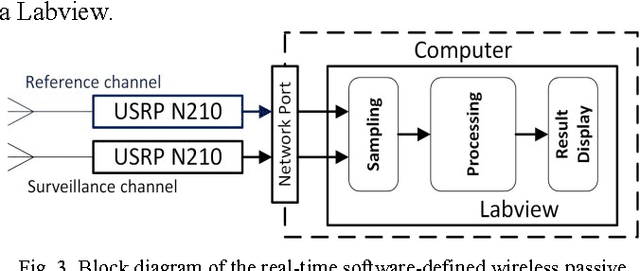
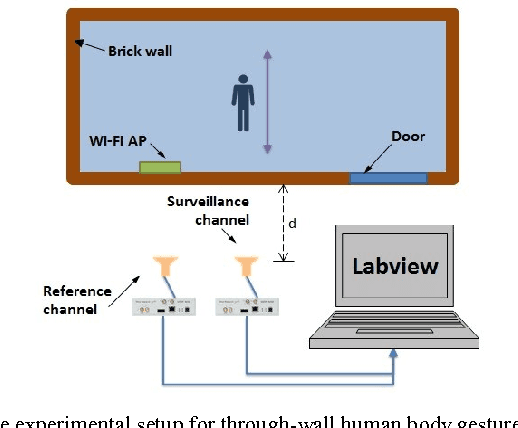
Abstract:This paper introduces a Wi-Fi signal based passive wireless sensing system that has the capability to detect diverse indoor human movements, from whole body motions to limb movements and including breathing movements of the chest. The real time signal processing used for human body motion sensing and software defined radio demo system are described and verified in practical experiments scenarios, which include detection of through-wall human body movement, hand gesture or tremor, and even respiration. The experiment results offer potential for promising healthcare applications using Wi-Fi passive sensing in the home to monitor daily activities, to gather health data and detect emergency situations.
MDPose: Human Skeletal Motion Reconstruction Using WiFi Micro-Doppler Signatures
Jan 11, 2022

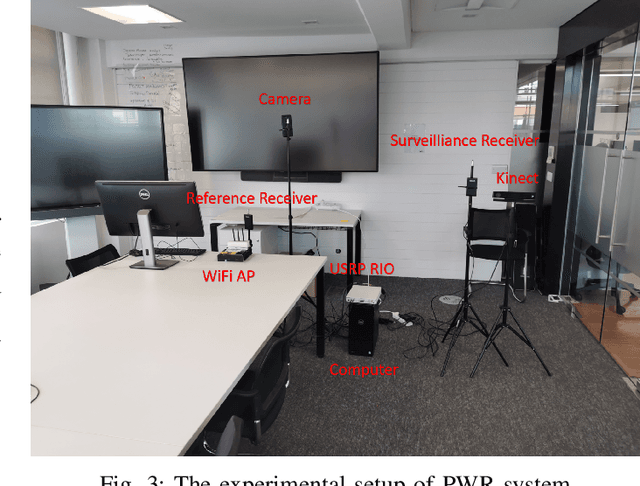
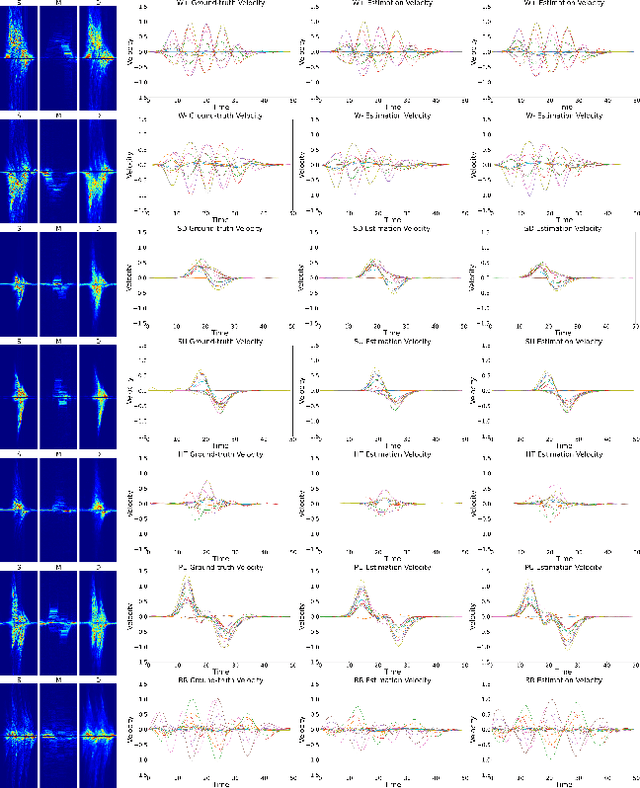
Abstract:Motion tracking systems based on optical sensors typically often suffer from issues, such as poor lighting conditions, occlusion, limited coverage, and may raise privacy concerns. More recently, radio frequency (RF)-based approaches using commercial WiFi devices have emerged which offer low-cost ubiquitous sensing whilst preserving privacy. However, the output of an RF sensing system, such as Range-Doppler spectrograms, cannot represent human motion intuitively and usually requires further processing. In this study, MDPose, a novel framework for human skeletal motion reconstruction based on WiFi micro-Doppler signatures, is proposed. It provides an effective solution to track human activities by reconstructing a skeleton model with 17 key points, which can assist with the interpretation of conventional RF sensing outputs in a more understandable way. Specifically, MDPose has various incremental stages to gradually address a series of challenges: First, a denoising algorithm is implemented to remove any unwanted noise that may affect the feature extraction and enhance weak Doppler signatures. Secondly, the convolutional neural network (CNN)-recurrent neural network (RNN) architecture is applied to learn temporal-spatial dependency from clean micro-Doppler signatures and restore key points' velocity information. Finally, a pose optimising mechanism is employed to estimate the initial state of the skeleton and to limit the increase of error. We have conducted comprehensive tests in a variety of environments using numerous subjects with a single receiver radar system to demonstrate the performance of MDPose, and report 29.4mm mean absolute error over all key points positions, which outperforms state-of-the-art RF-based pose estimation systems.
OPERAnet: A Multimodal Activity Recognition Dataset Acquired from Radio Frequency and Vision-based Sensors
Oct 08, 2021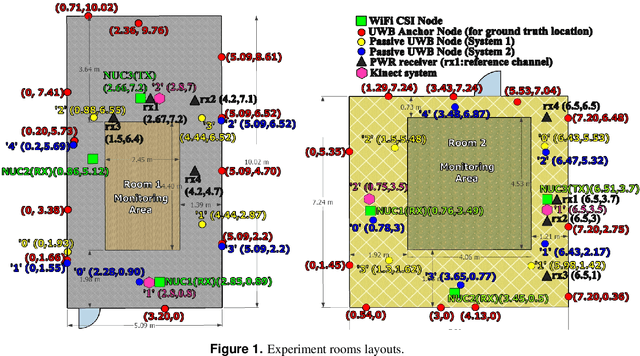
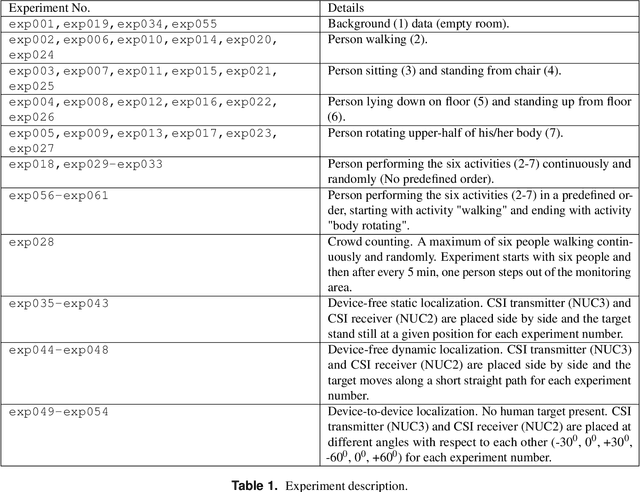
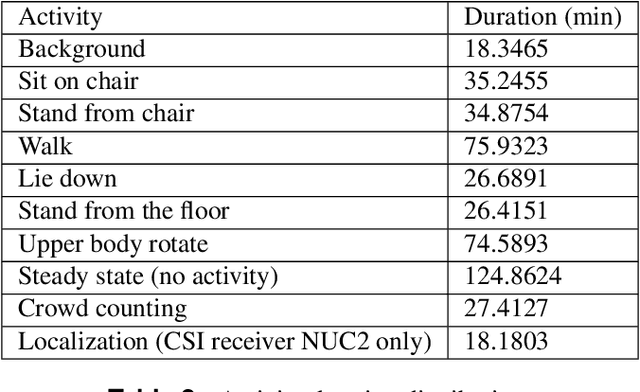
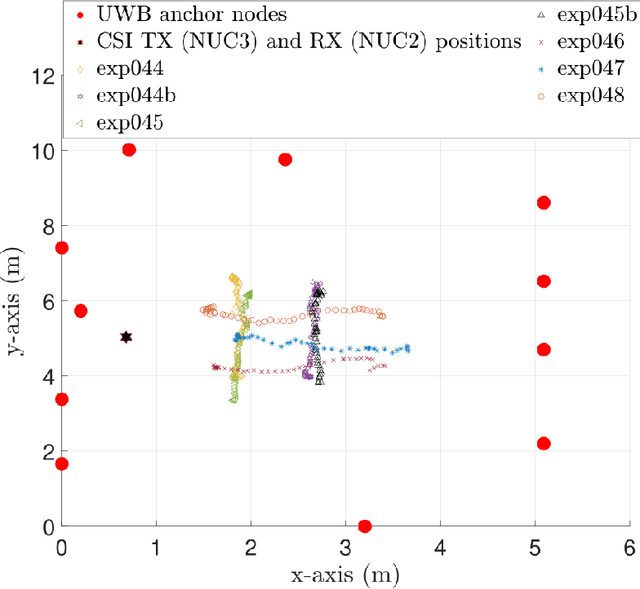
Abstract:This paper presents a comprehensive dataset intended to evaluate passive Human Activity Recognition (HAR) and localization techniques with measurements obtained from synchronized Radio-Frequency (RF) devices and vision-based sensors. The dataset consists of RF data including Channel State Information (CSI) extracted from a WiFi Network Interface Card (NIC), Passive WiFi Radar (PWR) built upon a Software Defined Radio (SDR) platform, and Ultra-Wideband (UWB) signals acquired via commercial off-the-shelf hardware. It also consists of vision/Infra-red based data acquired from Kinect sensors. Approximately 8 hours of annotated measurements are provided, which are collected across two rooms from 6 participants performing 6 daily activities. This dataset can be exploited to advance WiFi and vision-based HAR, for example, using pattern recognition, skeletal representation, deep learning algorithms or other novel approaches to accurately recognize human activities. Furthermore, it can potentially be used to passively track a human in an indoor environment. Such datasets are key tools required for the development of new algorithms and methods in the context of smart homes, elderly care, and surveillance applications.
Neural Style Transfer Enhanced Training Support For Human Activity Recognition
Jul 27, 2021
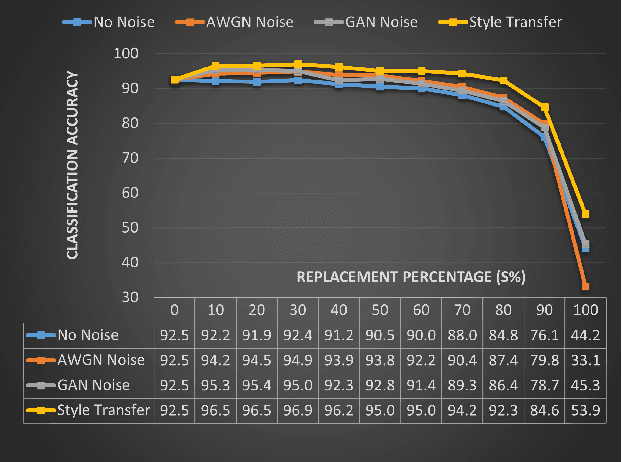
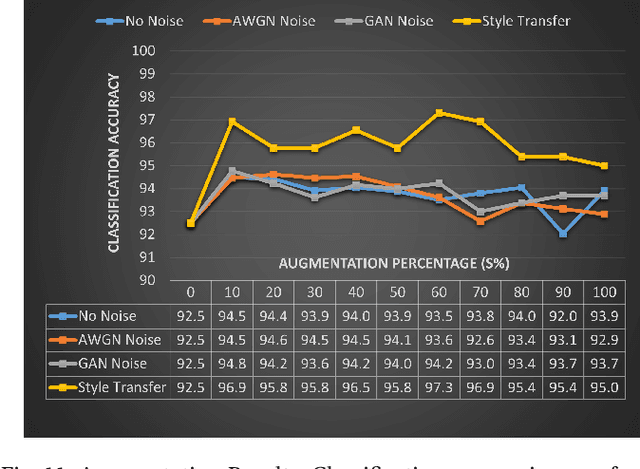

Abstract:This work presents an application of Integrated sensing and communication (ISAC) system for monitoring human activities directly related to healthcare. Real-time monitoring of humans can assist professionals in providing healthy living enabling technologies to ensure the health, safety, and well-being of people of all age groups. To enhance the human activity recognition performance of the ISAC system, we propose to use synthetic data generated through our human micro-Doppler simulator, SimHumalator to augment our limited measurement data. We generate a more realistic micro-Doppler signature dataset using a style-transfer neural network. The proposed network extracts environmental effects such as noise, multipath, and occlusions effects directly from the measurement data and transfers these features to our clean simulated signatures. This results in more realistic-looking signatures qualitatively and quantitatively. We use these enhanced signatures to augment our measurement data and observe an improvement in the classification performance by 5% compared to no augmentation case. Further, we benchmark the data augmentation performance of the style transferred signatures with three other synthetic datasets -- clean simulated spectrograms (no environmental effects), simulated data with added AWGN noise, and simulated data with GAN generated noise. The results indicate that style transferred simulated signatures well captures environmental factors more than any other synthetic dataset.
FMNet: Latent Feature-wise Mapping Network for Cleaning up Noisy Micro-Doppler Spectrogram
Jul 09, 2021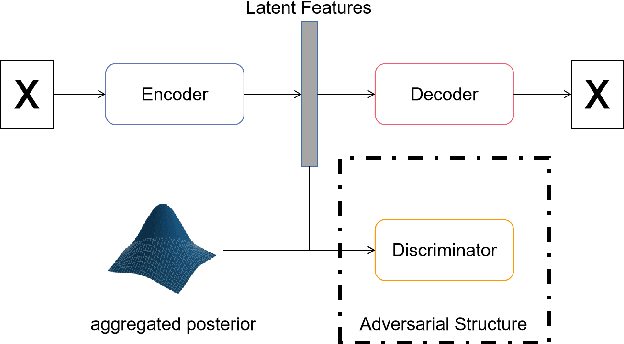

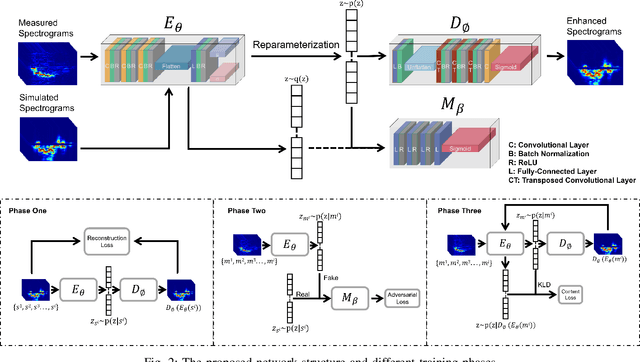
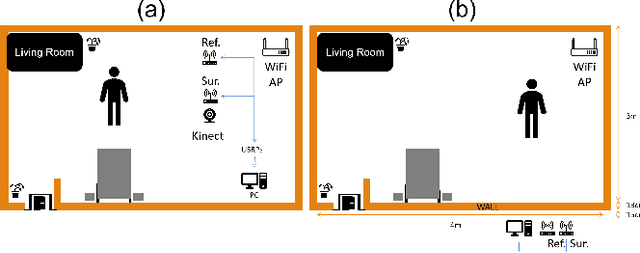
Abstract:Micro-Doppler signatures contain considerable information about target dynamics. However, the radar sensing systems are easily affected by noisy surroundings, resulting in uninterpretable motion patterns on the micro-Doppler spectrogram. Meanwhile, radar returns often suffer from multipath, clutter and interference. These issues lead to difficulty in, for example motion feature extraction, activity classification using micro Doppler signatures ($\mu$-DS), etc. In this paper, we propose a latent feature-wise mapping strategy, called Feature Mapping Network (FMNet), to transform measured spectrograms so that they more closely resemble the output from a simulation under the same conditions. Based on measured spectrogram and the matched simulated data, our framework contains three parts: an Encoder which is used to extract latent representations/features, a Decoder outputs reconstructed spectrogram according to the latent features, and a Discriminator minimizes the distance of latent features of measured and simulated data. We demonstrate the FMNet with six activities data and two experimental scenarios, and final results show strong enhanced patterns and can keep actual motion information to the greatest extent. On the other hand, we also propose a novel idea which trains a classifier with only simulated data and predicts new measured samples after cleaning them up with the FMNet. From final classification results, we can see significant improvements.
A Survey on Fundamental Limits of Integrated Sensing and Communication
Apr 22, 2021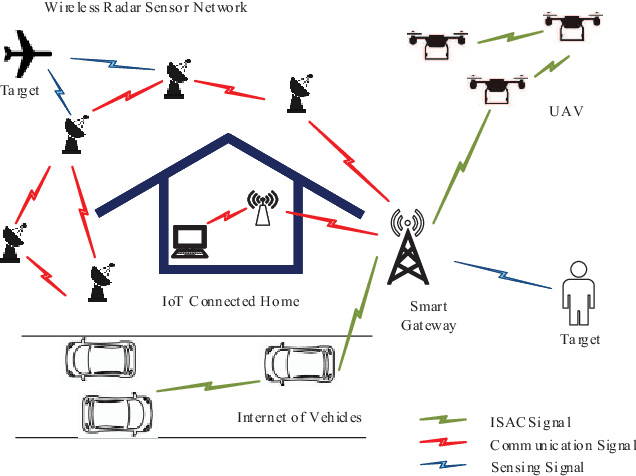
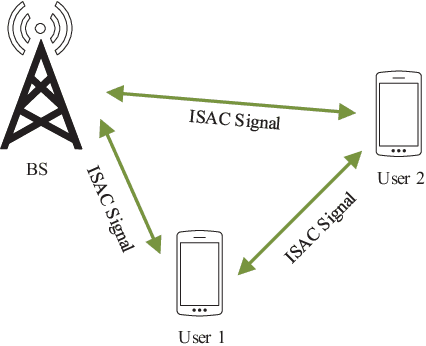
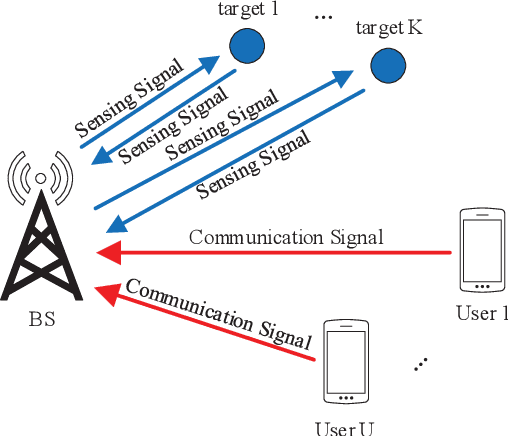
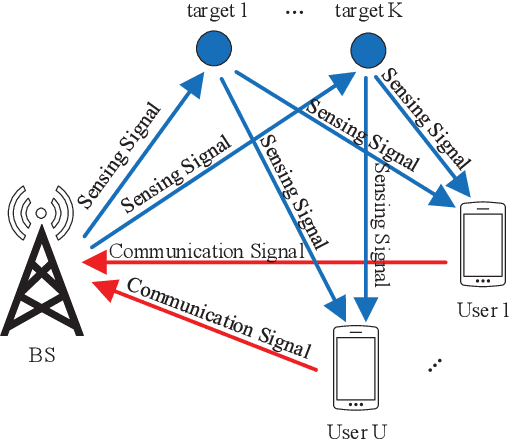
Abstract:The integrated sensing and communication (ISAC), in which the sensing and communication share the same frequency band and hardware, has emerged as a key technology in future wireless systems. Early works on ISAC have been focused on the design, analysis and optimization of practical ISAC technologies for various ISAC systems. While this line of works are necessary, it is equally important to study the fundamental limits of ISAC in order to understand the gap between the current state-of-the-art technologies and the performance limits, and provide useful insights and guidance for the development of better ISAC technologies that can approach the performance limits. In this paper, we aim to provide a comprehensive survey for the current research progress on the fundamental limits of ISAC. Particularly, we first propose a systematic classification method for both traditional radio sensing (such as radar sensing and wireless localization) and ISAC so that they can be naturally incorporated into a unified framework. Then we summarize the major performance metrics and bounds used in sensing, communications and ISAC, respectively. After that, we present the current research progresses on fundamental limits of each class of the traditional sensing and ISAC systems. Finally, the open problems and future research directions are discussed.
SimHumalator: An Open Source WiFi Based Passive Radar Human Simulator For Activity Recognition
Mar 02, 2021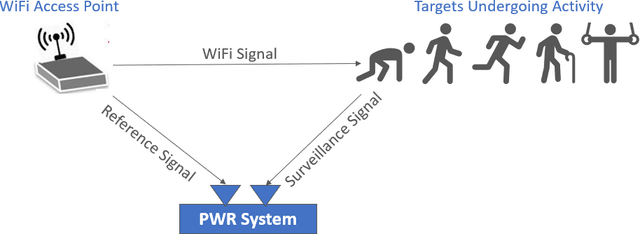
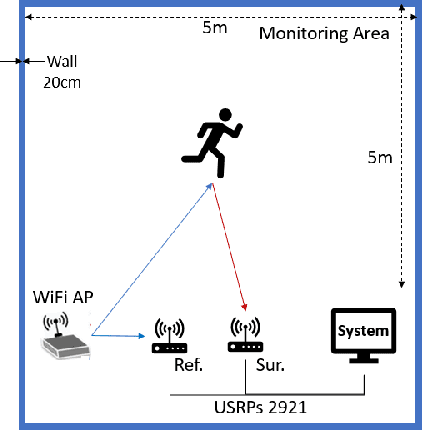

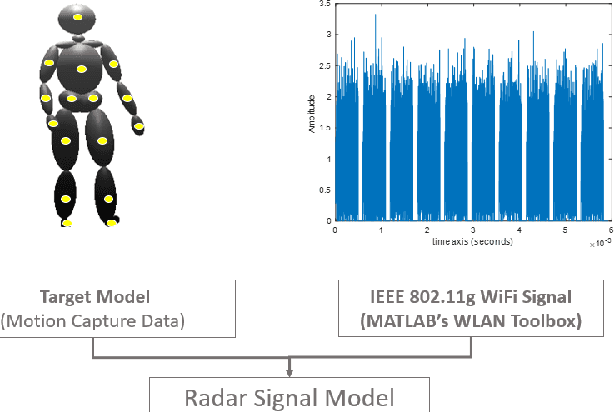
Abstract:This work presents a simulation framework to generate human micro-Dopplers in WiFi based passive radar scenarios, wherein we simulate IEEE 802.11g complaint WiFi transmissions using MATLAB's WLAN toolbox and human animation models derived from a marker-based motion capture system. We integrate WiFi transmission signals with the human animation data to generate the micro-Doppler features that incorporate the diversity of human motion characteristics, and the sensor parameters. In this paper, we consider five human activities. We uniformly benchmark the classification performance of multiple machine learning and deep learning models against a common dataset. Further, we validate the classification performance using the real radar data captured simultaneously with the motion capture system. We present experimental results using simulations and measurements demonstrating good classification accuracy of $\geq$ 95\% and $\approx$ 90\%, respectively.
 Add to Chrome
Add to Chrome Add to Firefox
Add to Firefox Add to Edge
Add to Edge